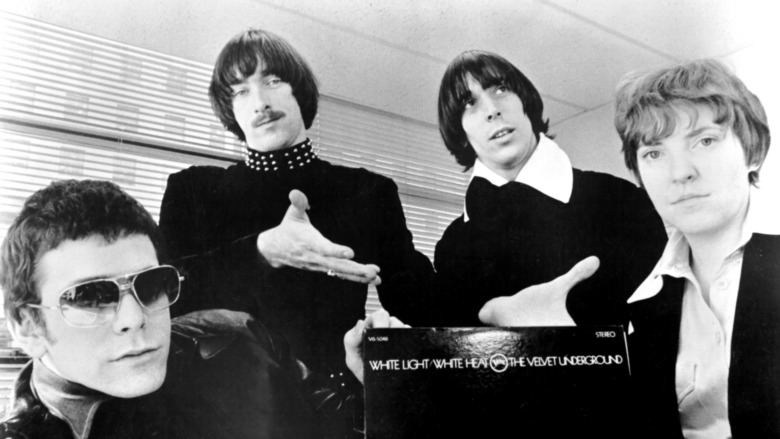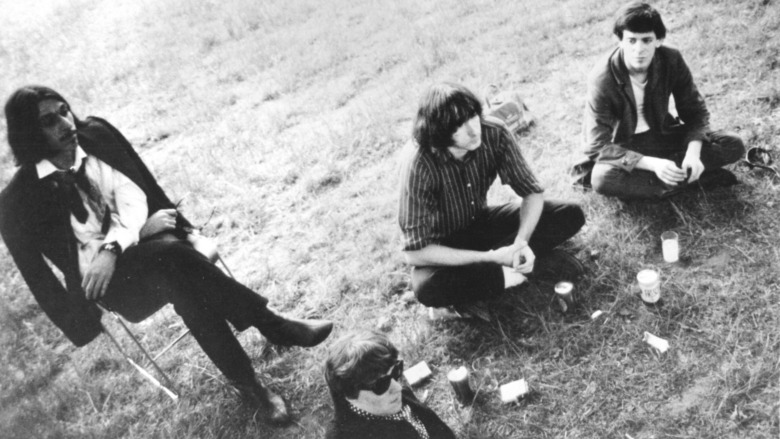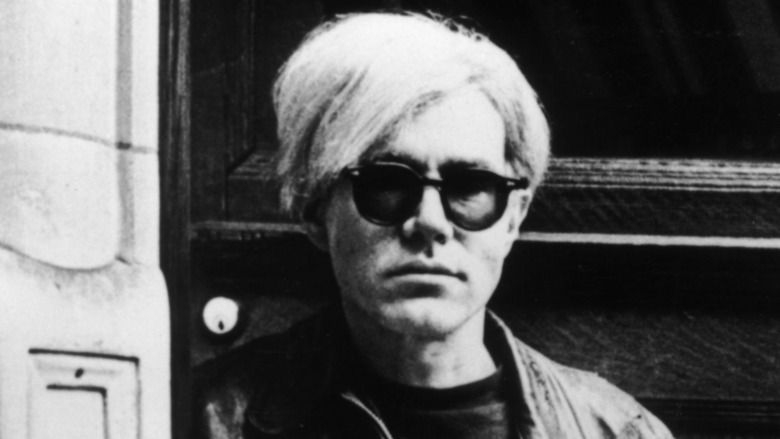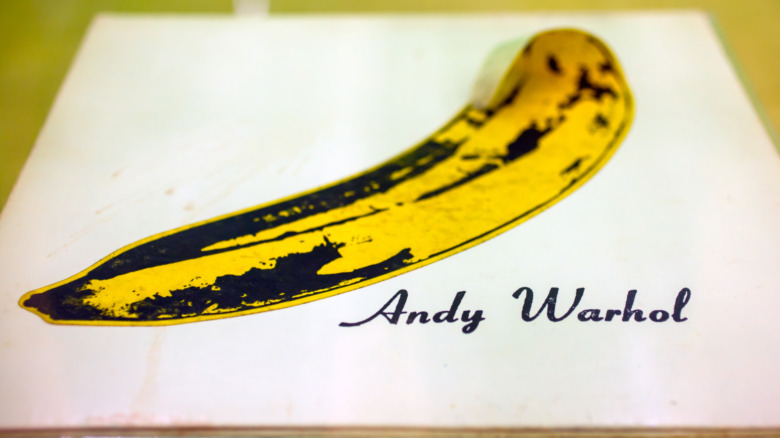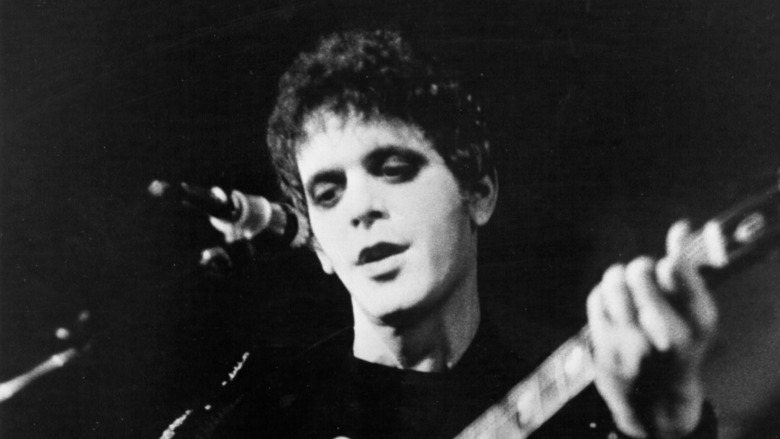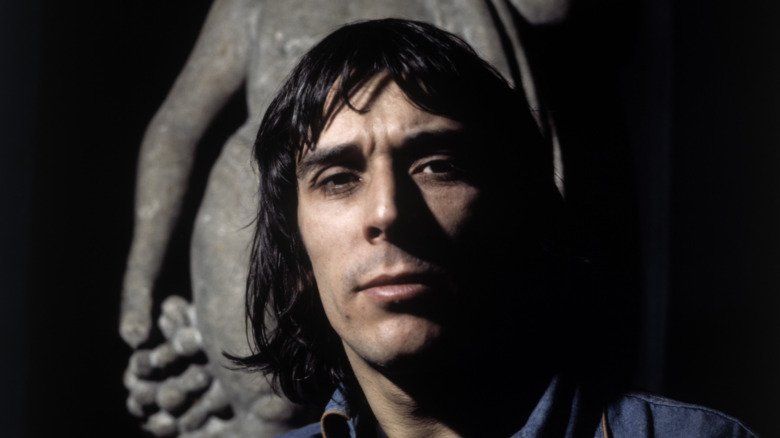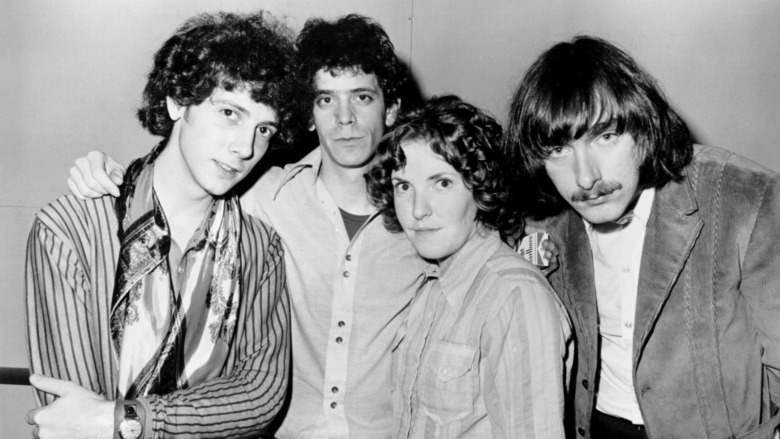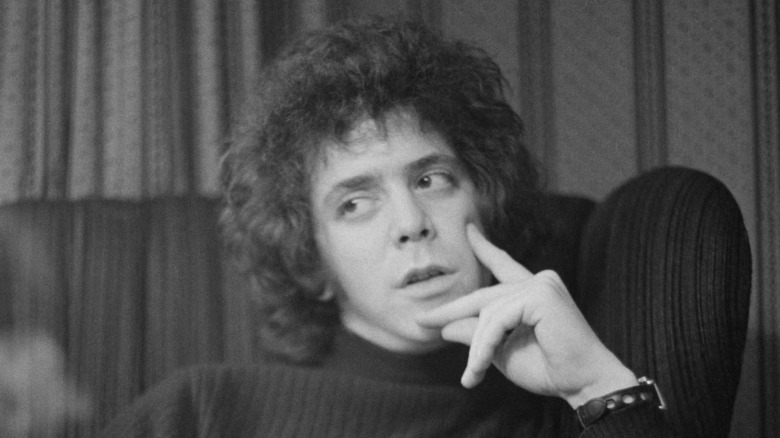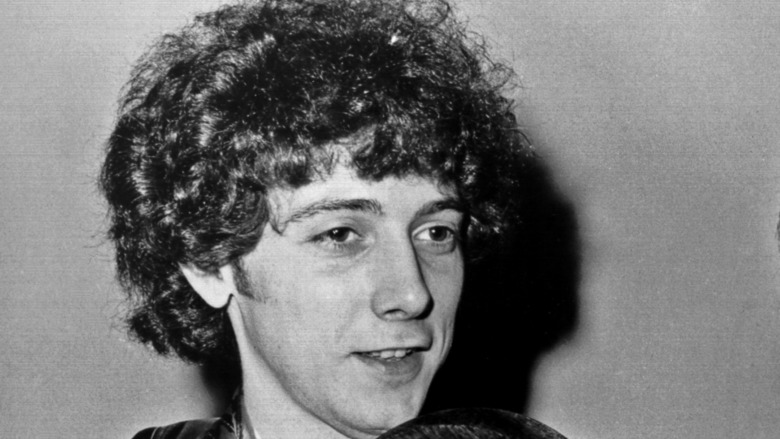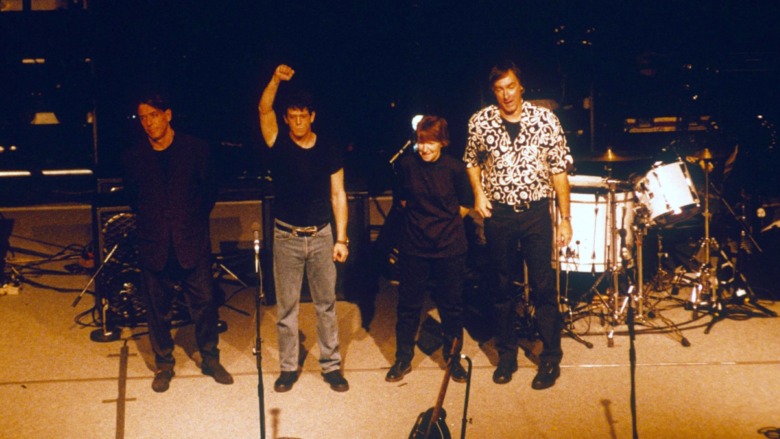The Untold Truth Of The Velvet Underground
In Hollywood, some of the greatest films made failed at the box office, according to The Independent. Some of these cinematic masterpieces include, "Citizen Kane," "The Shawshank Redemption," "It's A Wonderful Life," and "The Iron Giant." Unfortunately, a myriad of reasons such as poor marketing, bad timing, or failure to appeal to the zeitgeist of the moment in time led to these films failing to make a profit, only to be picked up years later and become classics over time.
The Velvet Underground reached similar failures and heights. Like "Citizen Kane," the group almost single handedly created a new perspective to their artistic medium. Like "The Shawshank Redemption," the group tackled dark and/or taboo subject matter without restraint. Like "It's A Wonderful Life," poor timing certainly did more harm than good for their commercial success. And like "The Iron Giant," the brains behind the project found greater commercial success following their failed masterpiece.
Like these films, The Velvet Underground's legacy transcended the period at which they were together. In just five albums (four with lead singer/songwriter Lou Reed) and in less than a decade, the band reinvented what rock music could sound like and what the genre could talk about lyrically. Here is the untold truth of The Velvet Underground.
Origins of The Velvet Underground
Like the band's popularity and points of inspiration, the beginning of The Velvet Underground can be found in New York. Three of the four members of the most popular variation of the band were born here. According to All Music, John Cale was born in the United Kingdom and moved to New York to study music.
In an interview with The Wall Street Journal, Cale recalled moving into an apartment in New York where he met poet Angus MacLise. It was through Cale that MacLise came into contact with Lou Reed, as told by All Music. Reed, like many American kids in the 1950s, loved early rock and roll and joined a band as a teenager. By the 1960s, like Cale, Reed became interested in avant-garde music.
The duo became a quartet when Reed bought in his old friend, Sterling Morrison, on guitar and Cale brought in MacLise on drums. Cale recalled his early memories with the band that called themselves, The Velvet Underground. "In the fifth-floor apartment in '65, Lou [Reed], Sterling [Morrison], and I combined the music of Erik Satie, John Cage, Phil Spector, Hank Williams, and Bob Dylan. The result was a new form of rock — more about art than commerce."
This initial lineup did not last long. Before their first performance where they took in money, MacLise felt they had become "sellouts" and left. He was replaced by Maureen "Moe" Tucker, another friend of Reed's.
Meeting Andy Warhol
The band was influenced by the New York art scene of the era, so it only made sense that the band and Andy Warhol would cross paths. According to Biography, Warhol was a leading artist in the pop art movement of the 1960s and produced avant-garde art that mixed fine art and mainstream appeal. He and Velvet Underground were a match made in heaven.
According to the University of Groningen in the Netherlands, Warhol first met the band in December 1965 and became enthralled by them. They were the avant-garde band with commercial aspirations, and he was an avant-garde artist who had commercial appeal. Lou Reed became a common fixture at Warhol's warehouse, The Factory. Reed became very influenced by the people he met at the warehouse and would write songs about these people. One of his most famous song, "Walk on the Wild Side," tells of these individual's backgrounds.
Warhol became the band's manager. In January 1966, Warhol invited The Velvet Underground to perform at the annual banquet of the New York Society of Clinical Psychiatry, along with individuals from the Factory, Cleveland reports. Warhol's patronage gave the band a financial safety net and artistic freedom. The connection between the worlds of rock music and experimental art became a central feature of the band, especially from Reed and John Cale. Still, the duo clashed with their manager, when Warhol pushed to add another member to the band to become the figurehead.
Nico joins the band
Already a quartet with the backing of one of the most recognizable faces in the art industry, Andy Warhol bought the group one more member to double on vocals with Lou Reed.
Nico, born Christa Päffgen, was a German model, actress, and nightclub singer who had become one of Warhol's "superstars" during the same period as he was supporting the band. He pushed the group to add her, despite Reed's objections, as the singer told to Rolling Stone in 1989. "He was this catalyst, always putting jarring elements together. Which was something I wasn't always happy about. So when he put Nico in, we said, 'Hmmm.' Because Andy said, 'Oh, you've got to have a chanteuse.' I said, 'Oh, Andy, give us a break.'"
Despite their objections, Nico carried with her some pedigree in the music world. According to CR Fashion Book, while working as a nightclub singer in New York, she was rumored to be a muse for Leonard Cohen and collaborated with Bob Dylan. Through Rolling Stones multi-instrumentalist Brian Jones, Nico met Warhol, who made her a central figure at the Factory. Believing she would provide a better face for the band than Reed, Warhol pushed the band to make her the face and singer. With Nico sharing vocals, the band's first album would become an influential masterpiece.
The Velvet Underground & Nico album
The self-titled debut album of The Velvet Underground became a landmark in the history of music. John Cale said of the album, "we were trying to do a Phil Spector thing with as few instruments as possible." Rolling Stone listed the album at No. 13 on their list of the 500 Greatest Albums.
However, the album was too ahead of its time. According to The Guardian, the album sold poorly, selling only 30,000 copies in the first five years after its release. The album completely contrasted to 1967's summer of love and psychedelia sound. Songs like, "I'm Waiting for the Man," "Venus in Fur," and "Heroin" discussed subjects that were taboo in the music industry, like drug use, dealers, and sexual practices, as reported by Happy Mag. Cale and guitarist Sterling Morrison's droning production and Lou Reed's lyrics and laid-back, talk-singing style stood in contrast to the airy voice of Nico. Post-punk, glam rock, art rock, new wave, noise, and industrial rock can find their base in The Velvet Underground's first album.
Despite working as the band's producer, Andy Warhol had very little say in the sound of the album. Still, he left his mark on the cover, which features a banana with his signature below it. According to the Daily Art Magazine, the original cover allowed the banana to be peeled back, showing a pink-colored, phallic banana.
The Band Provided Inspiration for Multiple Subgenres
By the time The Velvet Underground released their first album, rock music could be classified into a few different camps — the driving blues-rock of Cream and Jimi Hendrix, the folk-rock of The Band and The Byrds, and the "Merseybeat" of The Beatles, just to name a few.
According to Sound on Sound, The Beatles spent six months recording their 1967 classic album, "Sgt. Pepper Lonely Hearts Club Band." By comparison, an article now in the National Registry said that The Velvet Underground and Nico recorded their album in just four days for only $3,000. While the band did not come close to reaching the heights of "Sgt. Pepper" commercially, their album did establish a foundation for a small but passionate following.
According to Rate Your Music, Lou Reed's lyrics, sung through him and Nico, were nihilistic and depressing, while John Cale provided a droning and noisy production sound. This and their second album, "White Light/White Heat," would become important in the history of a number of sub-genres in rock, such as experimental rock, punk rock, Gothic rock, noise rock, glam rock, and alternative rock, just to name a few. Their third album, this one self-titled, would become influential in the early indie rock scene. However, in the late 1960s, the band was still on the outside looking in when it came to chart and commercial success
Firing Warhol and Nico and their Second Album
Still desiring commercial success without surrendering his sound or leadership in the band, Lou Reed began to feud more with his benefactor. According to Warholstars, in the early summer of 1967, Andy Warhol took Nico to a concert in Boston. The two arrived late, and Reed refused to let her perform with the band. Not long after the episode, Reed and Warhol held a private meeting where he fired the artist. Nico left along with Warhol, believing it was Reed's jealousy that led to her and Warhol's dismissal. "Everybody wanted to be the star. Of course, Lou always was. But the newspapers came to me all the time," Nico said.
Along with his feud with Warhol, Reed also feuded with his musical partner, John Cale. Richard Witts, a British musicologist who has written about the band, had this to say to ABC. "You have Lou Reed who was brought up in Queens. ... and he wanted to be a songwriter ... on the other side, John Cale, who came from South Wales and was a classically trained viola player ... you have these two worlds clashing, and these two personalities who also clashed personally."
Replacing Warhol with Steve Sesnick as their manager, the band released "White Light/White Heat" in January 1968. Reed's lyrics had a dark comedic aspect as the production was even darker. And like their debut, the classic today was a commercial flop upon its release.
John Cale Fired and Doug Yule Hired
With every band with two dominant creative forces comes internal fighting between the two. The late '60s had their fair share of band infighting, from John Lennon and Paul McCartney in The Beatles to Jack Bruce and Ginger Baker in Cream. The Velvet Underground stayed committed to this rule as John Cale and Lou Reed clashed constantly.
After the failure of "White Heat/White Light," the power struggle between Cale and Reed hit its breaking point. Whether it was his desire to have mainstream success and believing Cale's production techniques were limiting this or, like Nico, jealousy was a driving force, Reed wanted Cale out of the band. According to Furious, Reed gave the band members an ultimatum, Cale or himself. The other members followed Reed and kicked Cale out, The New York Times reports. Cale said of his relationship with Reed at the end was, "a non-sexual love affair that ran its course," as told by Wales Art Review.
Without the creativity of Cale's production, the band's final two albums with Reed had a more conventional rock sound over Reed's lyrics. The band added Doug Yule to replace Cale. According to All Music, Yule never auditioned with the band, and his hiring came largely because the band's manager, Steve Sesnick, knew friends of Yule. Still, Yule would play on the final three studio albums the band would produce.
Lou Reed's Departure
According to History, Lou Reed played his final show with his band on August 23, 1970, at Manhattan's famous club, Max's Kansas City. After six years of leading the underground band, Reed had decided to break away and become a solo artist, hoping he could reach the commercial success his band could not.
According to The Independent, with third album "The Velvet Underground," their first without Cale, the band took a more traditional approach to the rock music scene. This time, not only was their third effort a commercial failure and largely ignored by critics, but it also led to their dismissal from MGM Records. Their fourth effort, "Loaded," was released under Cotillon, a subsidiary of Atlantic, and, according to biographer Richie Unterberger, the band was made understand this was their last chance at mainstream success.
In an interview with Furious, Doug Yule said that he and Reed did much of the work on "Loaded." "Maureen was pregnant at the time with her first child and Sterling became discouraged early on because he felt I had too much an influence in it ... I did a lot on 'Loaded.' It sort of devolved down to the Lou and Doug recreational recording."
Like their other albums, "Loaded" became an influential album to future musicians, and it once again failed to make any sort of noise in the mainstream. Finally, Reed decided to leave the band.
Squeeze was panned and ignored
Despite not having either Lou Reed or John Cale, the two most creative members of The Velvet Underground during its height, the remnants of the group still pushed forward for one more album. The album, "Squeeze," was panned upon release and all but ignored by the fans of The Velvet Underground, according to Alt 77.
Manager Steve Sesnick put together a deal with Polydor and put Doug Yule in charge of making the album. At this point, both Sterling Morrison and Maureen Tucker had left the band, meaning that all the original members of The Velvet Underground were gone. According to All Music, Ian Paice, the drummer of Deep Purple, headed the project with Yule.
Released three years after Reed's departure, the album proved to be for no one. The critics, like all of Velvet Underground's work, ignored it, and the fans of the band did not pay it any mind seeing that Reed was no longer there. Jittery White Guy Music says that the album was full of generic rock songs and a few songs featuring Yule attempting to sing in the distinct style of Reed. After this failure, The Velvet Underground finally ended, and the fifth album joined works such as Creedence Clearwater Revival's "Mardi Gras" and The Clash's "Cut the Crap" as terrible final albums from iconic rock bands.
Reunion Tour and Second Break-Up
It is difficult to stay mad at old band-mates. According to Billboard, The Velvet Underground reunited and toured in 1993 in Europe, before old wounds resurfaced between the two rivals, Lou Reed and John Cale.
In 1987, Cale and Reed spoke for the first time in decades at Andy Warhol's memorial service, as told by Far Out Magazine. The pair's relationship grew to the point they recorded an album in honor of Warhol, "Songs For Drella." The two began a tour and were soon joined by Maureen Tucker. Despite Reed saying there would be no reunion, by 1993, Sterling Morrison returned, and the foursome were performing in Europe. And almost just as fast, the reunion ended with Cale and Reed back at each other's throats.
Plans for an American leg of the tour and an appearance on "MTV: Unplugged" were scrapped. Reed's biographer, Anthony DeCurtis, said it was Reed's ego that led to the band breaking apart once again. "Ever since he kicked Cale out in 1968, Lou had come to think of the Velvets as his band ... when it came time to think about an American tour and the 'Unplugged' show, Cale finally couldn't stand it, and that was the end of that."
Cale told BBC 6 Music in 2010 that he had no interest in another reunion with the band.
Death of Former Members
Unfortunately, by the time the group reformed to tour Europe in the early 1990s, two of the members of the band before and during their most well-known period had passed away. Despite appearing on only one album, Nico remains seen as an important part of the group, contributing to their most successful album. For Angus MacLise, his demise was like a slow-moving car crash, struggling with mental health and drug addiction.
According to All Music, MacLise continued to make music after leaving The Velvet Underground, though he focused more on poetry and calligraphy. MacLise collaborated with Yoko Ono and traveled around the world. Blastitude reports that after years of drug addiction, MacLise died in 1979 in Kathmandu, Nepal. He was 41 and cremated in the traditions of Tibetan Buddhists.
In 1988, while on vacation in Ibiza with her son, Nico was found on the side of the road unconscious next to her bike, as told by Village News. She died that evening of a brain hemorrhage. She was 49.
In 1995, Sterling Morrison died of non-Hopkin's lymphoma at 53, according to The New York Times.
Any hopes of a reunion ended in 2013 when Lou Reed passed away at the age of 71 from liver disease, Ultimate Classic Rock reports.
Legacy of The Velvet Underground
In 1996, The Velvet Underground was elected into the Rock & Roll Hall of Fame. Music journalist David Fricke had this to say about the band's induction. "The induction of the Velvet Underground into the Rock and Roll Hall of Fame is the culmination of the band's slow, strange, inexorable rise to its rightful place in posterity."
Despite being a failure commercially during their tenure and largely ignored by critics, the band's legacy can be heard today in any alternative or indie rock group.
VH1 listed The Velvet Underground as No. 24 on their list of the "100 Greatest Artists of All-Time," while Rolling Stone listed them No. 19. In spite of their lack of commercial or critical success in the 1960s, all four albums that featured Lou Reed were listed on Rolling Stone's list of the 500 Greatest Albums of All-Time. Both John Cale and Reed's post-VU work has seen them work with some of the greatest artists of the period, such as David Bowie, Patti Smith, and The Stooges. Despite never achieving commercial success as a band, The Velvet Underground is forever remembered as a foundational band in the history of rock music.
